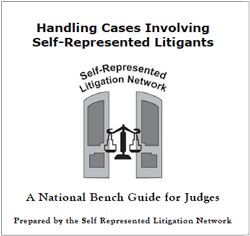Here is a sampling of my justice system-related articles.
“Procedural Fairness: A Treat for the Brain” in Case In Point: The Brain Issue (2016), publication of The National Judicial College
People are hardwired for fairness, and the justice system is the social context they count on most to provide it. The human sense of fairness is intriguing, partly because it goes so far beyond self-interest. The reward regions of the human brain—those associated with pleasures such as the taste of chocolate—tend to be activated both when we’re treated fairly and when we see others being treated fairly. In addition, people react negatively not just to getting less than someone else, but also sometimes to getting more. Researchers from multiple disciplines are examining the complex nature of perceptions of fairness. Most recently, findings in social psychology have been augmented by research in neuroscience. (more, pages 25-31)
“Toward an Adult Learning Model with Increased Cultural Relevance,” in NASJE News – Newsletter of NASJE (Fall 2006)
“I am an Accommodator, which if you’re familiar with David A. Kolb’s Learning Styles Inventory (LSI), explains a lot about how I came to be involved in adapting Kolb’s approach for tribal faculty development programs for the National Tribal Judicial Center at The National Judicial College (NJC). However, if you’re like most of us, you would get that deer-in-the-headlights look if someone asked you to explain what Kolb’s meaning of ‘Accommodator’ is….” (more)
“Communicating with Self-Represented Litigants,” Case In Point (2011), publication of the National Judicial College

“Judges’ communication in the courtroom impacts the quality of information they send and receive, the likelihood of compliance and the overall perceived fairness of the process by court participants. Communication can be particularly challenging for judges in cases involving self-represented litigants (SRLs), and the number of these cases is increasing across the country. One of the keys to effective communication—to creating shared meaning—is being able to understand the perspective of others.” (more, pages 12-14)
“Facilitating Large Group Discussions and Activities: Size Matters,” in NASJE News – Newsletter of the National Association of State Judicial Educators (Winter 2011)
“An important function of judicial branch educators is to draw out the resources in the classroom—to build in interaction so everyone can learn from the different perspectives, experiences, and ideas of the participants. Facilitation skills are vital for encouraging the high level of participation that leads to deeper learning in adult education. Unfortunately, when the class size is large, many instructors hesitate to use activities that could be quite productive even—or sometimes especially—in large groups….” (more)
 Handling Cases Involving Self-Represented Litigants: A National Bench Guide for Judges. Co-author, “Communication Tools” chapter. Self-Represented Litigation Network, The National Judicial College, National Center for State Courts, and American Judicature Society (2008).
Handling Cases Involving Self-Represented Litigants: A National Bench Guide for Judges. Co-author, “Communication Tools” chapter. Self-Represented Litigation Network, The National Judicial College, National Center for State Courts, and American Judicature Society (2008).
“Communication is the foundation of all our interactions with others. It influences how we perceive and judge not only other people but also the facts and circumstances of cases. The court system rests heavily on the communication skills of its various participants. This chapter surveys the communications challenges facing judges in cases involving persons representing themselves. It describes techniques that judges can use to get the information they need to make appropriate decisions and to convey those decisions in ways that are more likely to result in compliance….” (more)
“Lessons From and For Experts,” in NASJE News – Newsletter of the National Association of State Judicial Educators (Spring 2008)
“Experts are examples of what successful learning looks like. Yet, as students and as educators, we know that experts are not necessarily good teachers. ‘Expertise can sometimes hurt teaching because many experts forget what is easy and what is difficult for students’ (Bransford, et al, p. 44). While expert performance often depends on a depth of knowledge that gets people to the place where information and experience coalesce into ‘gut instinct,’ the people who have gotten there may not be able to communicate what is actually happening at that intuitive level in a way that others can learn to do it, too…. ” (more)
Many more of my previously published articles are available at www.NASJE.org.